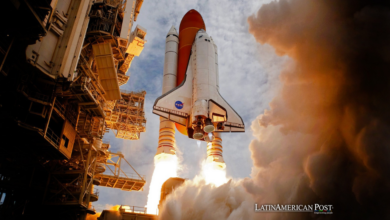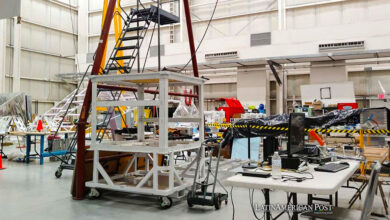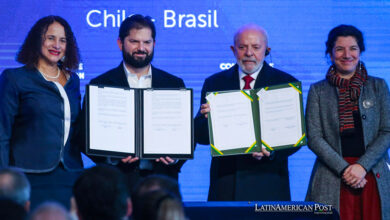Artemis Mission: The Nasa Program that Plans to Extend the Human Presence in the Galaxy
Artemis I is the First Phase of a Space Program that Plans to Return Humanity to the Moon and Prepare the wWy to Reach Mars. We Tell you About this Program and the Data to See the Launch this Saturday, September 3.

Photo: NASA
LatinAmerican Post | Joshua Radesca
Escucha este artículo
Leer en español: Misión Artemis: el programa de la Nasa que planea extender la presencia humana en la galaxia
Space exploration is something that has interested humanity for a long time. One of the most notable milestones in this regard is the Apollo program, which took man to the moon for the first time in July 1969. For a couple of years, NASA, together with various commercial and international partners, has been developing a program whose objective is both the return and permanence of humans on this satellite, as well as creating the necessary conditions to be able to reach other regions of the galaxy.
The initial step in this plan is the Artemis I mission. It is "the first in a series of increasingly complex missions to develop a long-term human presence on the moon for decades to come," says Nasa. This organization also points out that the mission "will demonstrate our commitment and our ability to extend human existence to the moon and beyond."
On Monday, August 29, much of the world's attention was focused on Launch Complex 39B of the modernized Kennedy Space Center in Florida, where the Orion spacecraft aboard the Space Launch System (SLS) was expected to take off. It is a powerful rocket 98 meters high, powered by four RS-25 engines and two attached boosters. However, the launch was postponed due to technical problems and other last-minute inconveniences. However, it is normal for this to happen with this type of release.
We recommend you read: Gallery: 2022, a year of NASA mysteries and discoveries
The objective of the Artemis missions
Artemis I will be an uncrewed test flight of the Space Launch System rocket and the Orion spacecraft, which are destined to come within 60 miles of the Moon. The ship, after separating from the SLS, will travel 450,000 km from Earth and 64,000 km beyond the Moon. It will carry science and technology payloads on board that will help study and expand knowledge of lunar science and deep space radiation. Of particular interest are the effects on human physiology produced by long periods in space.
If the plans are maintained, the next phase would be Artemis II in 2024, the first piloted test of this program. By 2025, a new human landing on the moon could be made, within the framework of Artemis III. NASA's intention would be to establish in the coming years, for the first time, a continuous presence on the moon to prepare for missions to Mars.
The drawbacks of the first launch
What prevented the launch on August 29 was that one of the four SLS rocket engines developed problems during preparations. This could not reach the proper temperature range for the engine to start at takeoff. NASA confirmed that there were other issues as well, as "during the countdown, launch controllers worked on several additional issues, including storms in the area that delayed the start of propellant loading operations, a leak in disconnection in the 8-inch line, used to fill and drain liquid hydrogen from the core stage and a hydrogen leak from a valve used to vent the propellant from the core stage buffer tank.”
The new launch attempt
After the problems of August 29, those responsible for the mission have been holding meetings in which the technical and meteorological conditions are analyzed with the intention of establishing a new date for the launch. “U.S. Space Force Delta 45 space launch meteorologists predict a 60% chance of favorable weather conditions for an Artemis I launch attempt during a two-hour window opening at 2:17 p.m. EDT on Saturday, September 3," NASA said in a statement.
This, without a doubt, is a historical moment in which we are witnessing the first steps of a project, whose results mark a path that will take humanity through the galaxy. The broadcast of the event can be followed on the NASA YouTube channel, in the following video:




